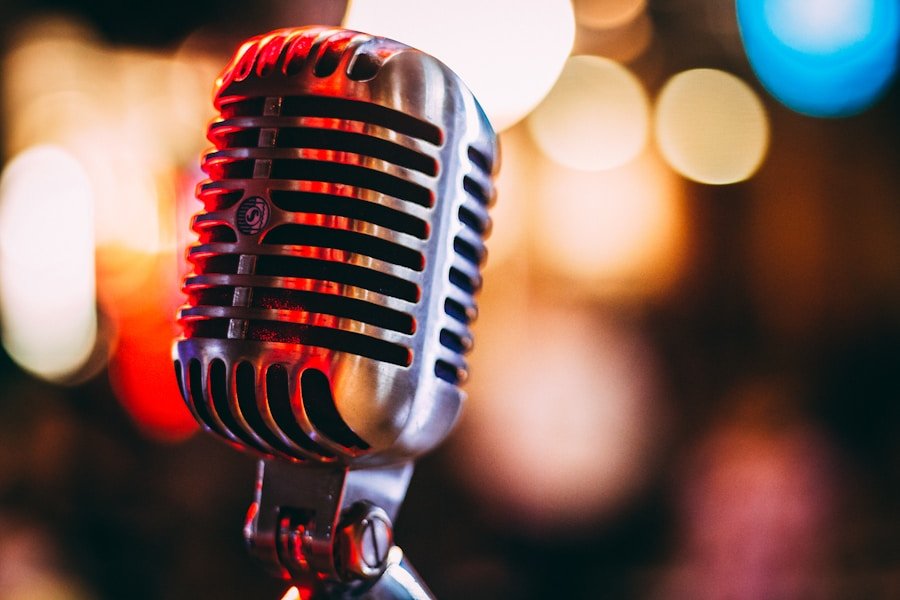External microphones offer a wide range of benefits for smartphone users looking to improve the quality of their audio recordings. One of the main advantages of using an external microphone is the ability to capture clearer and more professional-sounding audio. Built-in smartphone microphones are often limited in their ability to capture high-quality sound, especially in noisy or outdoor environments. External microphones, on the other hand, are designed to pick up sound more accurately and with less interference, resulting in clearer and more natural-sounding recordings.
Another benefit of using an external microphone is the ability to capture a wider range of sound. Many external microphones come with different settings and features that allow users to adjust the directionality and sensitivity of the microphone, making it easier to capture specific types of sound, such as interviews, music performances, or ambient noise. Additionally, external microphones often have better wind and noise reduction capabilities, making them ideal for outdoor recording situations. Overall, using an external microphone can significantly improve the quality and versatility of your smartphone audio recordings.
Choosing the Right External Microphone for Your Smartphone
When it comes to choosing the right external microphone for your smartphone, there are several factors to consider. The first thing to think about is the type of recording you will be doing. If you plan on recording interviews or conversations, a lavalier or clip-on microphone may be the best option, as it can be easily attached to clothing for hands-free recording. On the other hand, if you are recording music or other types of performances, a shotgun or directional microphone may be more suitable, as it can capture sound from a specific direction and eliminate unwanted background noise.
Another important factor to consider is the compatibility of the microphone with your smartphone. Some external microphones are designed specifically for certain smartphone models, while others are more universal and can be used with a variety of devices. It’s important to check the compatibility of the microphone with your smartphone before making a purchase to ensure that it will work properly with your device. Additionally, consider the size and portability of the microphone, especially if you plan on using it for on-the-go recording. Ultimately, choosing the right external microphone for your smartphone will depend on your specific recording needs and preferences.
Setting Up Your External Microphone for Optimal Performance
Once you have chosen the right external microphone for your smartphone, it’s important to set it up properly to ensure optimal performance. The first step is to connect the microphone to your smartphone using the appropriate adapter or cable. Many external microphones come with a 3.5mm jack that can be plugged directly into the headphone jack of your smartphone, while others may require a lightning or USB-C adapter for newer devices. Make sure to follow the manufacturer’s instructions for connecting the microphone to your smartphone to avoid any compatibility issues.
After connecting the microphone, it’s important to adjust the settings on your smartphone to optimize the performance of the microphone. Depending on your device and the type of microphone you are using, you may need to adjust the input levels, gain, or other audio settings in the recording app or settings menu. It’s also a good idea to test the microphone in different recording environments to ensure that it is capturing sound accurately and without interference. Additionally, consider using a windscreen or pop filter to reduce unwanted noise and improve the overall quality of your recordings. By setting up your external microphone properly, you can ensure that it performs at its best and delivers high-quality audio recordings.
Tips for Recording High-Quality Audio with Your Smartphone and External Microphone
Recording high-quality audio with your smartphone and external microphone requires some knowledge and practice. One important tip is to find a quiet and controlled environment for recording, as background noise can significantly impact the quality of your recordings. If you are recording outdoors or in a noisy environment, consider using a directional microphone with good noise reduction capabilities to minimize unwanted sounds. Additionally, positioning the microphone close to the sound source can help capture clearer and more detailed audio.
Another tip for recording high-quality audio with your smartphone and external microphone is to monitor your levels and adjust the input gain as needed. Overloading the microphone with too much sound can result in distortion and clipping, while recording at too low of a level can lead to a weak and noisy signal. It’s important to find the right balance and adjust the input levels accordingly to ensure that your recordings are clear and free from unwanted noise. Additionally, consider using headphones to monitor your recordings in real-time and make any necessary adjustments on the fly.
Editing and Enhancing Your Audio Recordings
Once you have recorded audio with your smartphone and external microphone, it’s important to edit and enhance your recordings to achieve the best possible sound quality. There are several editing apps and software programs available for smartphones that allow users to trim, adjust levels, add effects, and enhance their audio recordings. When editing your recordings, consider removing any unwanted noise or background sounds, adjusting levels for consistency, and adding effects such as reverb or EQ to improve the overall sound.
In addition to editing, consider enhancing your audio recordings with post-processing techniques such as compression, limiting, and normalization. These techniques can help balance out the dynamics of your recordings, reduce peaks and valleys in volume, and bring out more detail in the sound. It’s important to use these techniques sparingly and with caution, as over-processing can lead to unnatural or distorted sound. Ultimately, editing and enhancing your audio recordings can help bring out the best in your recordings and create a more professional and polished final product.
Troubleshooting Common Issues with External Microphones
While using an external microphone with your smartphone can greatly improve the quality of your audio recordings, there are some common issues that may arise from time to time. One common issue is compatibility problems between the microphone and smartphone, which can result in poor sound quality or no sound at all. If you are experiencing compatibility issues, try using a different adapter or cable, updating your device’s software, or contacting the manufacturer for support.
Another common issue with external microphones is interference or noise in the recordings. This can be caused by a variety of factors, such as electrical interference, wind noise, or improper gain settings. To reduce interference and noise in your recordings, try using a windscreen or pop filter, adjusting the input levels on your smartphone, or moving to a quieter recording environment. Additionally, consider using a different type of microphone with better noise reduction capabilities if you frequently encounter interference issues.
Taking Your Smartphone Audio to the Next Level with Advanced Techniques
For those looking to take their smartphone audio recordings to the next level, there are several advanced techniques that can be used to achieve professional-quality sound. One advanced technique is stereo recording, which involves using two microphones to capture a wider and more immersive sound field. This technique can be especially useful for recording music performances or environmental sounds, as it creates a more realistic and spatially accurate representation of the sound.
Another advanced technique for smartphone audio recording is using external preamps or audio interfaces to improve the quality and flexibility of your recordings. External preamps can provide cleaner gain control and better signal-to-noise ratio than built-in smartphone preamps, resulting in higher-quality recordings with less noise and distortion. Additionally, using an audio interface allows users to connect multiple microphones and instruments to their smartphone for more complex recording setups.
In conclusion, using an external microphone with your smartphone can greatly improve the quality and versatility of your audio recordings. By choosing the right microphone, setting it up properly, recording high-quality audio, editing and enhancing your recordings, troubleshooting common issues, and using advanced techniques, you can take your smartphone audio to the next level and achieve professional-quality sound. Whether you are recording interviews, music performances, podcasts, or ambient sounds, using an external microphone with your smartphone can help you capture clear and natural-sounding audio that stands out from the crowd.








